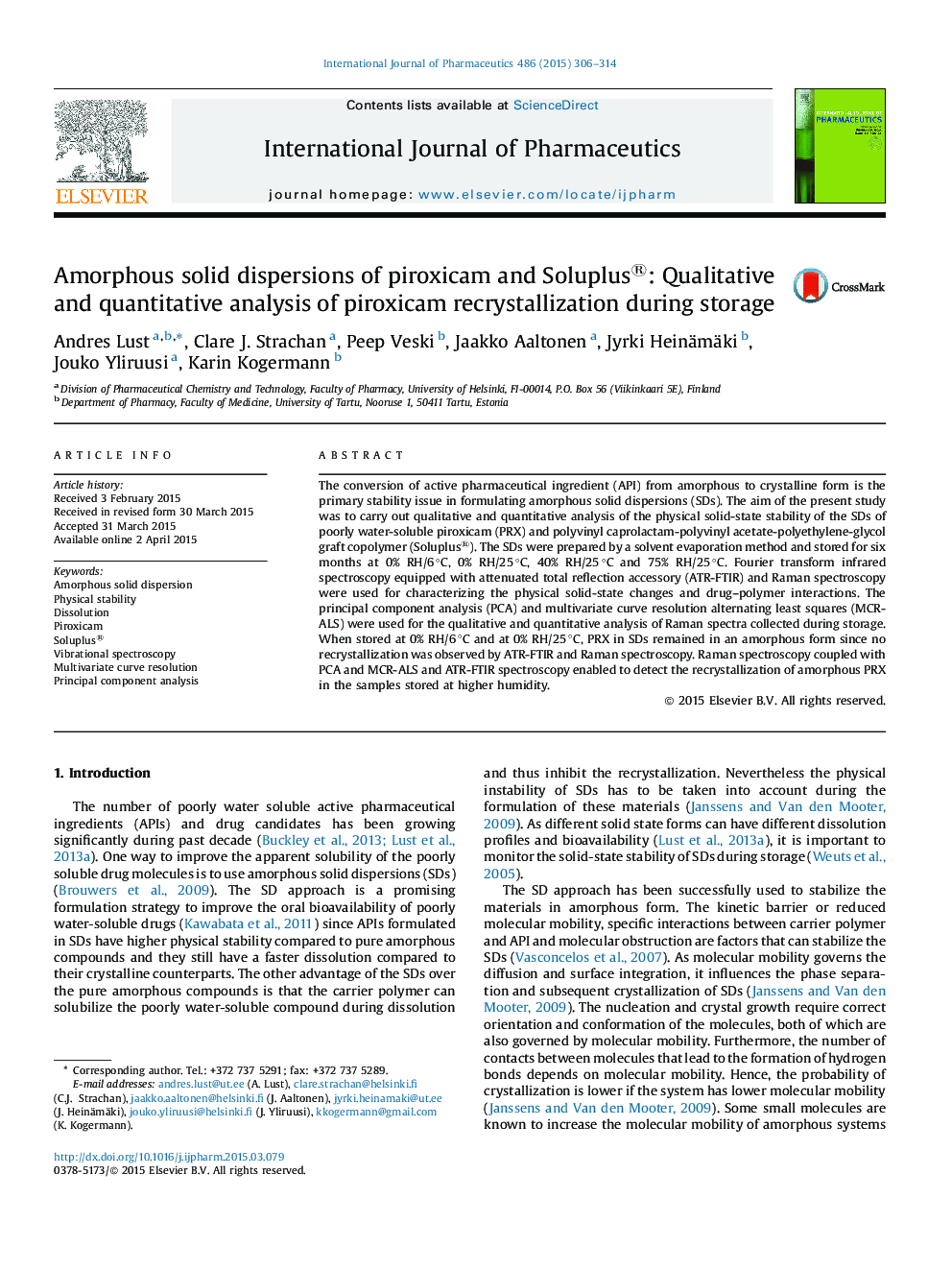| Article ID | Journal | Published Year | Pages | File Type |
|---|---|---|---|---|
| 5818931 | International Journal of Pharmaceutics | 2015 | 9 Pages |
The conversion of active pharmaceutical ingredient (API) from amorphous to crystalline form is the primary stability issue in formulating amorphous solid dispersions (SDs). The aim of the present study was to carry out qualitative and quantitative analysis of the physical solid-state stability of the SDs of poorly water-soluble piroxicam (PRX) and polyvinyl caprolactam-polyvinyl acetate-polyethylene-glycol graft copolymer (Soluplus®). The SDs were prepared by a solvent evaporation method and stored for six months at 0% RH/6 °C, 0% RH/25 °C, 40% RH/25 °C and 75% RH/25 °C. Fourier transform infrared spectroscopy equipped with attenuated total reflection accessory (ATR-FTIR) and Raman spectroscopy were used for characterizing the physical solid-state changes and drug-polymer interactions. The principal component analysis (PCA) and multivariate curve resolution alternating least squares (MCR-ALS) were used for the qualitative and quantitative analysis of Raman spectra collected during storage. When stored at 0% RH/6 °C and at 0% RH/25 °C, PRX in SDs remained in an amorphous form since no recrystallization was observed by ATR-FTIR and Raman spectroscopy. Raman spectroscopy coupled with PCA and MCR-ALS and ATR-FTIR spectroscopy enabled to detect the recrystallization of amorphous PRX in the samples stored at higher humidity.
Graphical abstractDownload high-res image (179KB)Download full-size image
